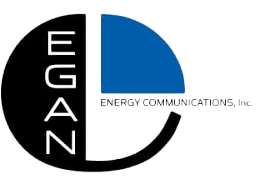DENVER, COLORADO–March 8, 2010–Written by John Egan for Industrial Info Resources (Sugar Land, Texas)–State and federal renewable electric standards (RES) cannot be met without the construction of new transmission lines to connect often remote renewable generation sources to far-off load centers, speakers told a wind and transmission workshop sponsored by the American Wind Energy Association (AWEA) (Washington, D.C.). Getting these transmission lines built will happen only if there is a broad, sustained effort to engage all stakeholders that are involved with or affected by a transmission project, agreed speakers at the workshop, held in Denver March 2-3.
“Strong stakeholder engagement is the key to turning potential transmission lines into actual transmission lines,” said Bob Anderson, a former Montana utility regulator who is now directing the Western Grid Group. “Broader public acceptance is needed. The public generally accepts renewable sources of electricity. They need to be persuaded that transmission is a necessary part of that.”
Pam Eaton, deputy vice president for public lands for The Wilderness Society, told about 350 attendees at the AWEA event, “You can’t site transmission towers in empty places anymore, because there are no more empty places left–every place has someone who loves it and wants to protect and preserve it.”
Justin Ray, a wind energy consultant with Black & Veatch, told the conference that it takes about 10 years to develop a transmission project once a need is identified. By contrast, developing a wind energy project takes about three to four years. Ray said that a Black & Veatch study predicted an additional 163,000 megawatts of transmission capacity must be built by 2030 to accommodate the proposed federal RES of 20%.
Wind energy generating capacity has increased dramatically in recent years, but an inability to expeditiously site and construct transmission lines is keeping that resource from attaining its full commercial potential, speakers agreed. Across the U.S., close to 300,000 megawatts of proposed wind power projects in seeking to connect with the electric grid, according to AWEA.
“The renewable project pipeline in the U.S. is huge, and it is growing,” said Shane Mullins, Industrial Info’s vice president of product development for the power industry. “The majority of these projects are in remote locations where the best resources are. If we are going to continue to develop renewable energy at the pace we have seen recently and revitalize our economy, we will have to put forward a competitive transmission development system that crosses state lines and is developed system wide.”
Transmission lines are particularly controversial and difficult to site, because most of them cross state boundaries, triggering review by multiple federal, tribal, state and local agencies. A welter of federal and state environmental laws govern transmission-siting decisions, and environmental impact assessments often take years to complete. Parties unhappy with the results of environmental assessments often file suits, which further delay the siting and construction process.
One transmission manager at the conference told Industrial Info that members of the public typically see transmission lines as “an eyesore to be opposed, while public officials see them as a cash cow to be milked.”
The state of Wyoming is home to six separate proposed interstate transmission projects that would bring wind energy to Colorado, New Mexico, Arizona, Nevada, Utah and Idaho. The six proposed projects have a total capacity of more than 16,000 megawatts, Steve Ellenbecker, executive director of the Wyoming Infrastructure Authority told the AWEA event. But it is unlikely all six lines will be built, he said, ticking off a familiar litany of reasons, including environmental siting, landowner resistance, and conflicts among federal agencies with overlapping jurisdictions.
Several speakers at the AWEA event expressed optimism that a federally-funded transmission planning effort, which included funds for stakeholder engagement efforts, could shorten the transmission permitting and siting process. Last year’s American Recovery & Reinvestment Act (ARRA) included $60 million to support long-term transmission planning in the Western Interconnection, Eastern Interconnection and the Electric Reliability Council of Texas (ERCOT). An additional $20 million will support a transmission analysis to be performed by the U.S. Department of Energy and the North American Electric Reliability Council (NERC).
The Wilderness Society’s Eaton said, “The traditional top-down transmission planning process is being informed by bottom-up stakeholder input, which should lead to better outcomes. Engaging in transmission planning is a big step for people in the wildlife and land-use community. We want to get to a low-carbon future. Right now, we’re changing the tires on a car that is already moving.”
Industrial Info Resources (IIR) is the leading provider of global market intelligence specializing in the industrial process, heavy manufacturing and energy related markets. For more than 26 years, Industrial Info has provided plant and project spending opportunity databases, market forecasts, high resolution maps, and daily industry news.

